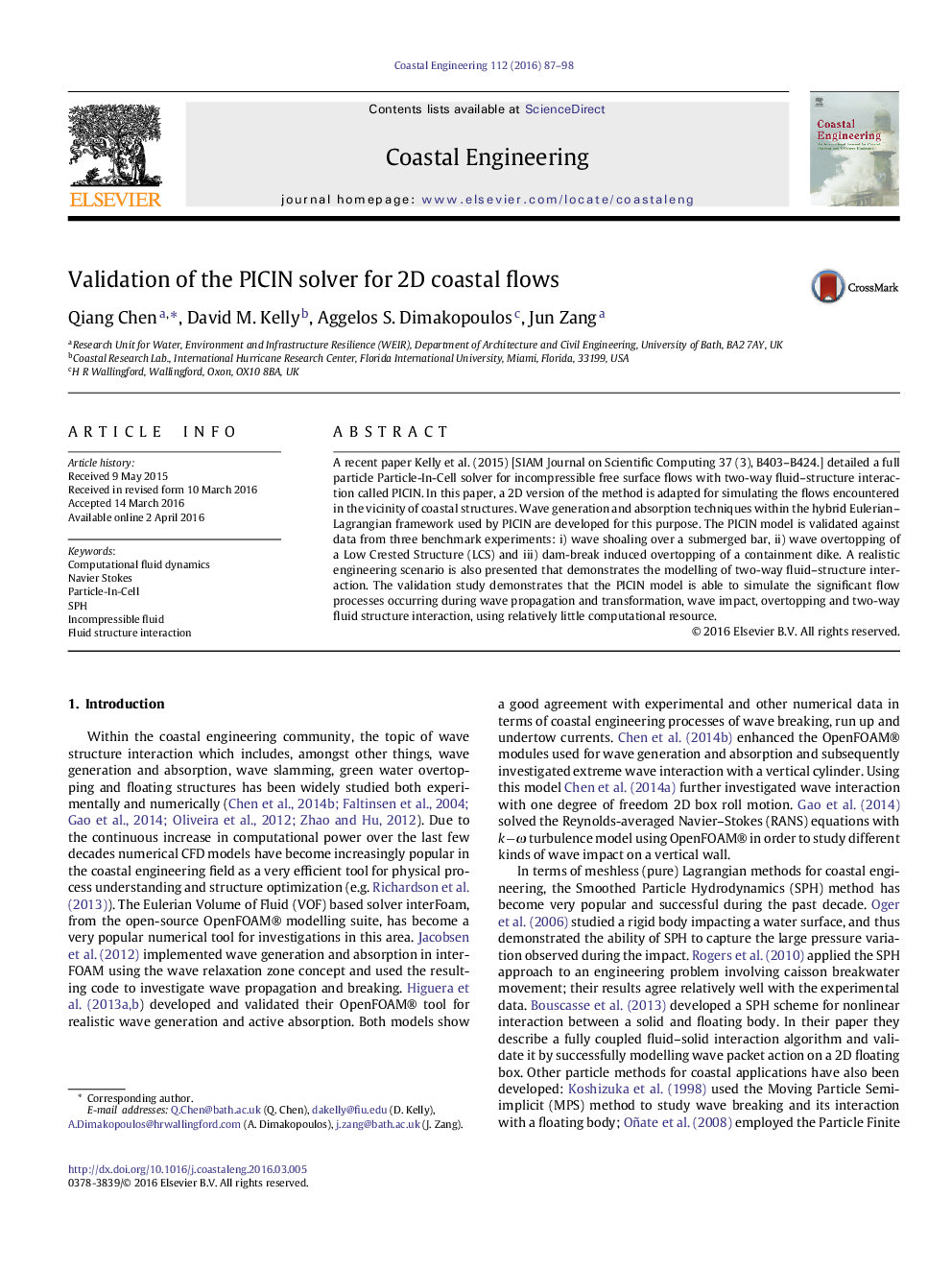| Article ID | Journal | Published Year | Pages | File Type |
|---|---|---|---|---|
| 1720564 | Coastal Engineering | 2016 | 12 Pages |
•The performance of PICIN solver for coastal engineering applications is assessed.•Numerical wave tank is established with wave generation and absorption.•The PICIN model is able to simulate the significant flow processes.•The PICIN model uses relatively little computational resources.
A recent paper Kelly et al. (2015) [SIAM Journal on Scientific Computing 37 (3), B403–B424.] detailed a full particle Particle-In-Cell solver for incompressible free surface flows with two-way fluid–structure interaction called PICIN. In this paper, a 2D version of the method is adapted for simulating the flows encountered in the vicinity of coastal structures. Wave generation and absorption techniques within the hybrid Eulerian–Lagrangian framework used by PICIN are developed for this purpose. The PICIN model is validated against data from three benchmark experiments: i) wave shoaling over a submerged bar, ii) wave overtopping of a Low Crested Structure (LCS) and iii) dam-break induced overtopping of a containment dike. A realistic engineering scenario is also presented that demonstrates the modelling of two-way fluid–structure interaction. The validation study demonstrates that the PICIN model is able to simulate the significant flow processes occurring during wave propagation and transformation, wave impact, overtopping and two-way fluid structure interaction, using relatively little computational resource.
